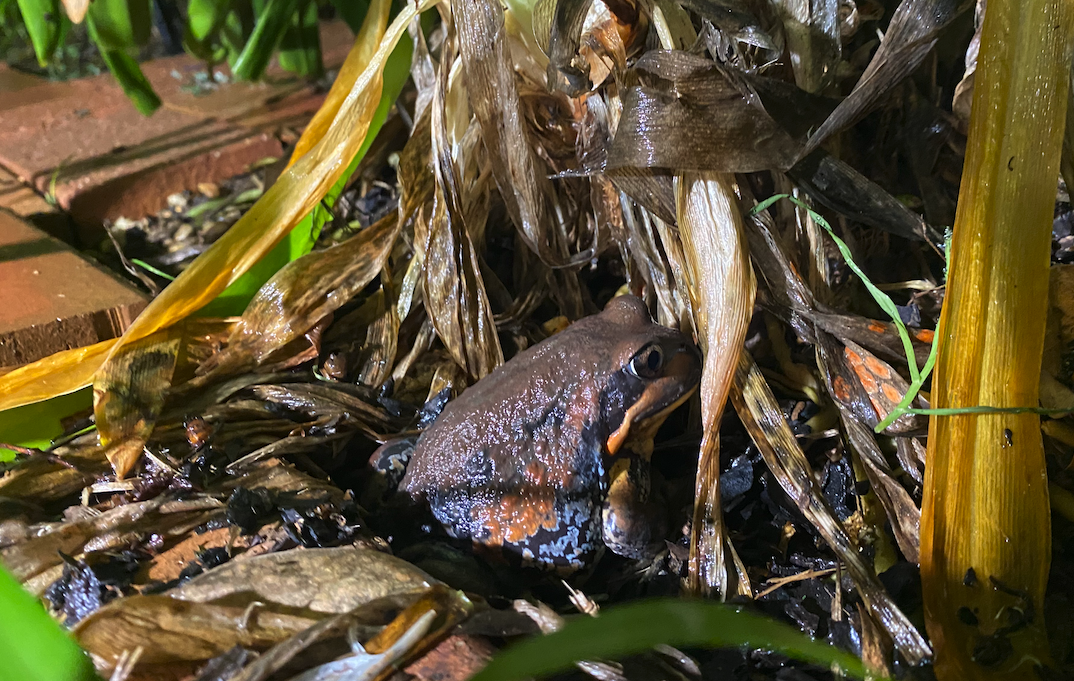
The giant pobblebonk frog has a great name and a distinctive call. Photo: Alexandra Badenhop.
For a moment there, as I took the dog outside on a rainy night, I thought I had almost stepped on a cane toad.
Fortunately, the invasive feral toads are yet to make their way this far south and I quickly realised that my garden visitor was an oversized specimen of a favourite local frog.
The pobblebonk is perhaps the best-named animal in Australia.
Also called the banjo frog, the various subspecies are known for their distinctive ”bonk” call, which has been likened to the plucking of a banjo.
These streaky brown, grey, black and gold frogs can be surprisingly large, ranging up to around 8 cm, and, given that my new friend had easily exceeded the upper end of the range, he’s most likely to be the giant banjo frog or giant pobblebonk (Limnodynastes interiors).
Giant pobblebonks are one of the country’s largest frogs, averaging between 7 and 9 cm, and are strong burrowers with powerful back legs with a kind of built-in shovel that allows them to plough backwards into the earth.
While they remain generally close to water, these musical amphibians spend much of their time underground, only popping up after rain to feed, breed and lay eggs.
Unlike some other burrowing frogs, they are equally at home in the water, preferring to spawn in flooded burrows or slow-moving waterways and wetlands.
The giant banjo frog lives for about 10 years and its superior burrowing ability and larger body allow it to survive in changing climates and dig deeper during droughts to aestivate (become dormant) and maintain adequate moisture.
Breeding time is usually through spring and summer and the peak calling period is between September and November.
The giant banjo frog has a deeper, more resonant “bonk, bu-bonk bonk” than its smaller relatives and the males often synchronise with other nearby frogs so that it really can sound like a bluegrass band tuning up!
Last year, the ABC named the pobblebonk in the top 10 of Australia’s favourite animal sounds, which also included the black cockatoo, boobook, butcherbird, cicada, fairywren, kookaburra, lyrebird, magpie and whipbird.
After almost 150,000 votes, it was the magpie’s melodious carolling that took the top spot, with the humble pobblebonk finishing at a respectable No. 7.
Fortunately, the pobblebonk is a tough little digger and is not endangered at this stage, so we can expect it to share our waterways and backyards for many years to come.
Original Article published by Chris Roe on Region Riverina.


